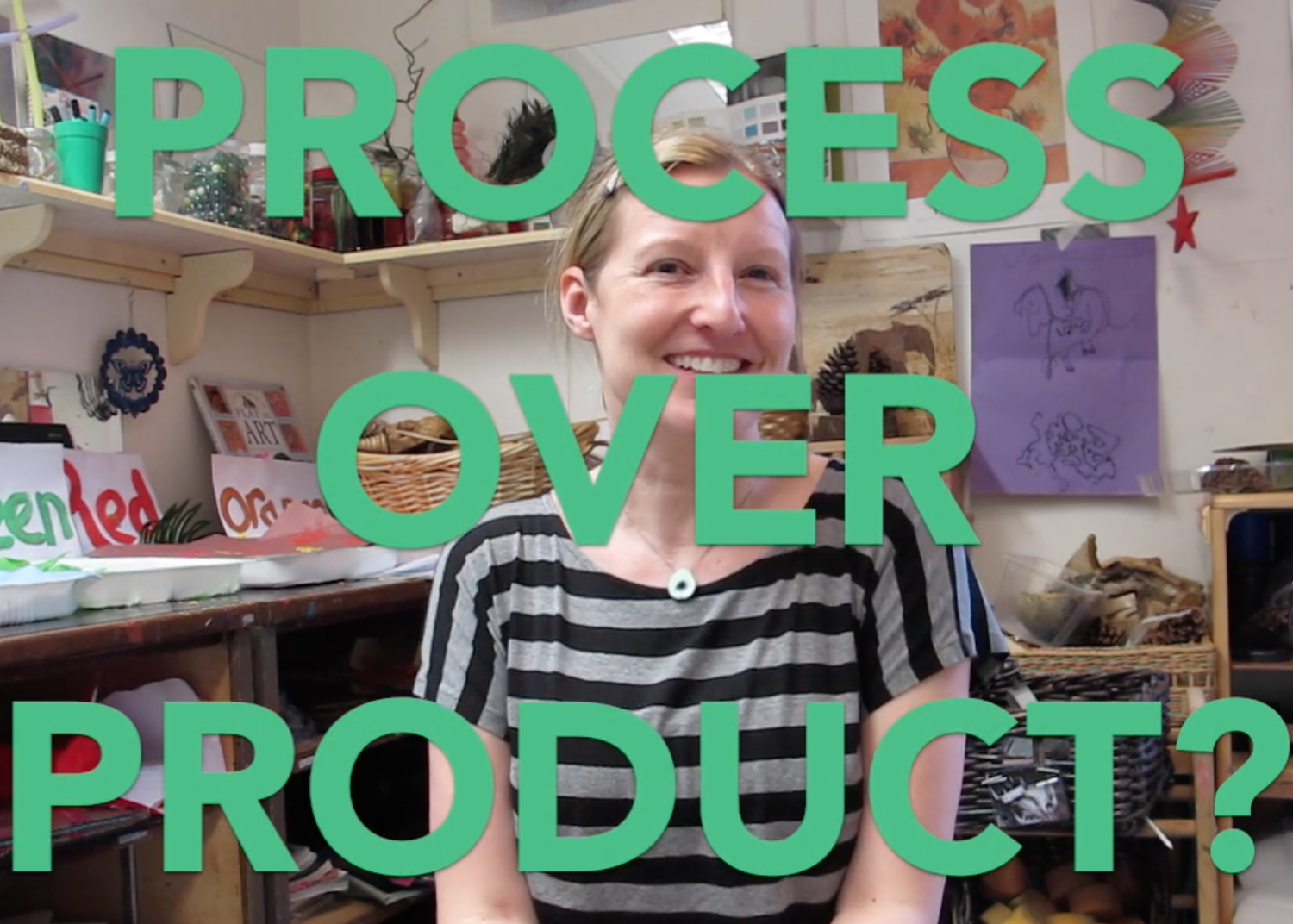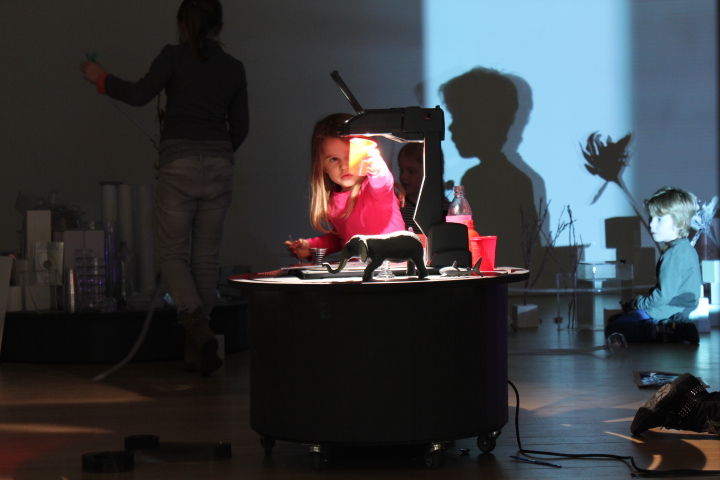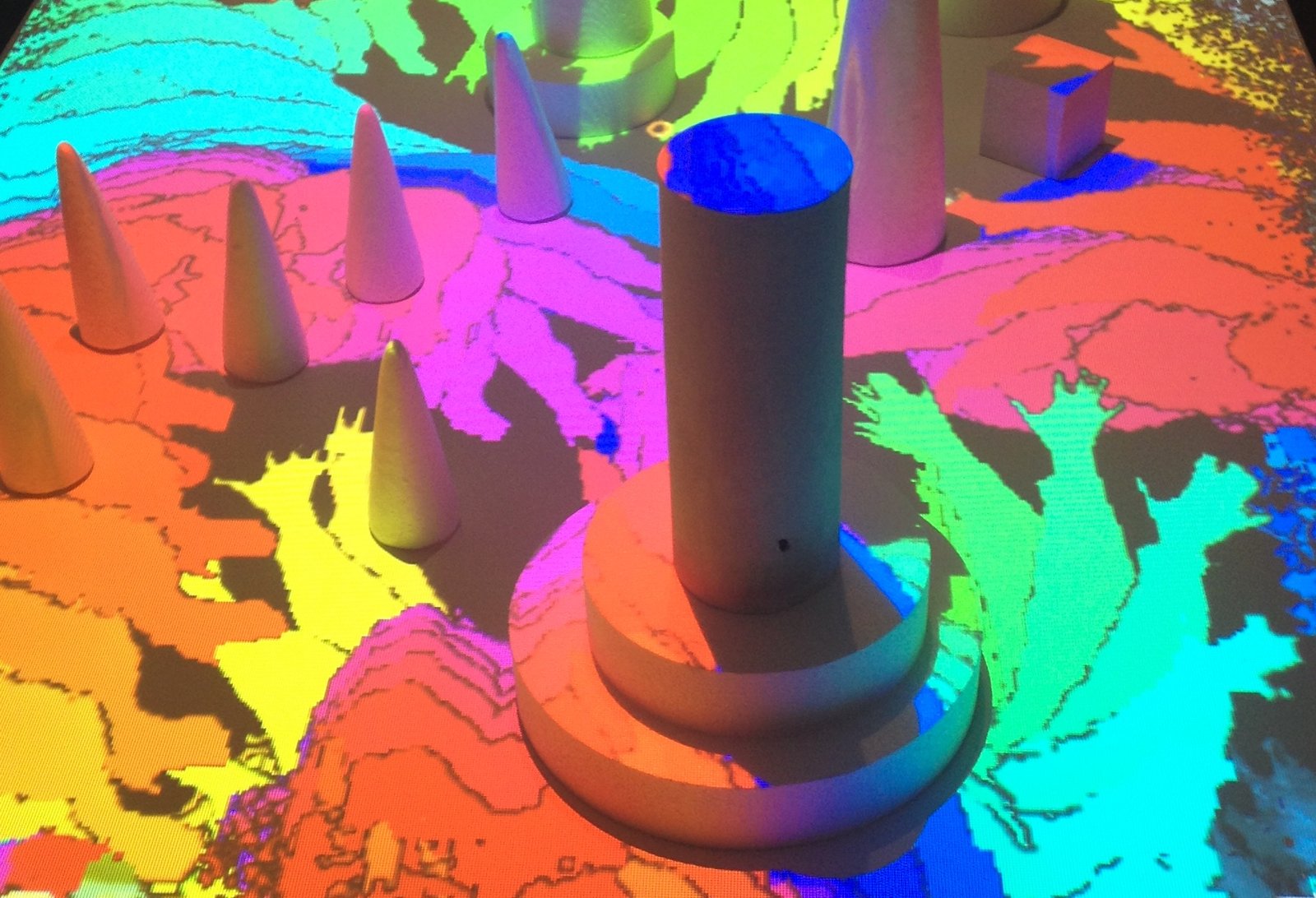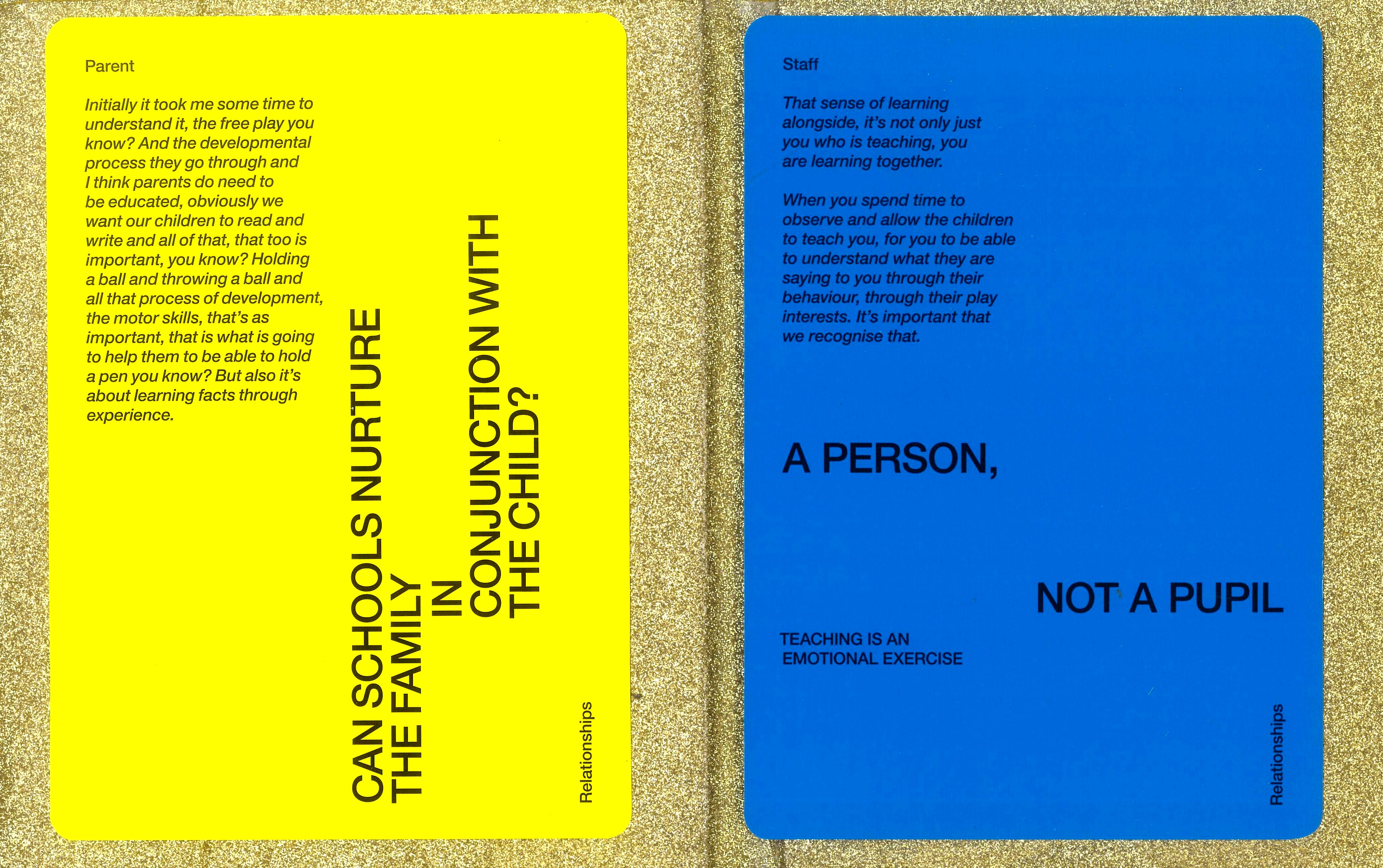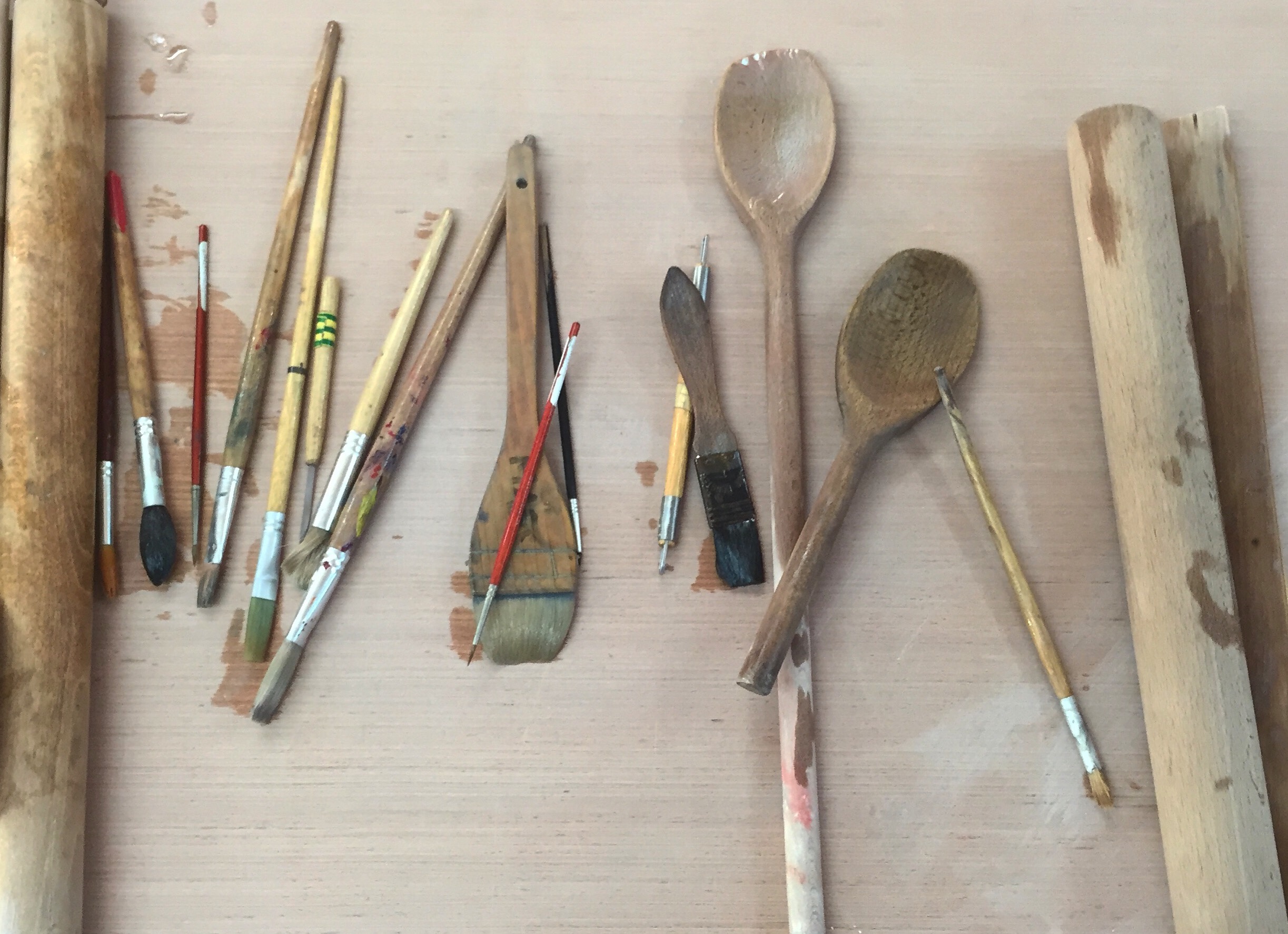This post features a video interview with artist Lorna Rose. She talks about her approach to creative learning, like the importance of flexibility, multiculturalism, and inclusivity in education. We live in a world of great cultural, social, and political diversity. As the great art educator Maxine Greene said, the arts play an integral role in the growth of social cohesion by encouraging children to empathize with others from different background. This week I spent two days at the Lillian de Lissa Children’s Centre & Nursery in Birmingham (UK) working alongside their artist-in-residence, Lorna Rose. 90% of the children attending the nursery are from an ethnic minority, over half speak English as a second language. Of the 90 children in attendance, 28 languages are spoken! The nursery’s vision is for children to leave the center with a sense of curiosity about the world. Lorna Rose has been working as the artist-in-residence at the centre for over…
The ‘Atelier van Licht’ at the Centraal Museum, Utrecht
This post features a reflection on my visit to the Atelier van Licht at the Centraal Museum in Utrecht, The Netherlands. The Atelier was being presented as part of the museum’s Nice’n’Light exhibition that ran from 17 October 2015 – 24 January 2016. Above: Atelier van Licht at Stedelijk Museum, Amsterdam. Image credit: Atelier van Licht A creative space for children’s play and experimentation with materials Back in February 2016, I travelled to the Netherlands to meet with Annemieke Huisingh, the founder of the wonderful Atelier van Licht. I was interested in learning more about the Atelier’s approach to designing children’s material-based creative learning environments. At the time, the Atelier (which is another word used to describe an artist’s studio) was on display at the Centraal Museum in Utrecht as part of a contemporary art show that was exploring artist’s experimentation with light. The Atelier had been designed for children of all ages…
Why art is important in children’s learning
Art can play an important part in children’s learning. This post shares five key reasons why. “Every child has the right to relax, play and take part in a wide range of cultural and artistic activities.” Article 31, United Nations Convention on the Rights of the Child Many education theorists have argued that art has a central role in children’s learning and development. For example, John Dewey – the founder of American progressive education – argued for the need to integrate art into people’s everyday experiences. Eillot Eisner then talked about the criticality of art in public school curriculum and Maxine Greene wrote about its significance in allowing people to imagine the world from multiple perspectives. All of these amazing thinkers built their arguments on the same issue: that art has been marginalised from school curriculum in place of syllabus focused on maths, English, science and technology. A recent example of this can…
5 education apps for documenting learning in 2019
*This is an updated version of a post originally published in May 2018* If you are a teacher in the Northern Hemisphere, the new academic year is heating up. The paper work may be piling up too… A LOT! Education apps can help with that. Apps can be used to digitally document and collate children’s learning. These records can then be easily shared with other students, educators and parents – helping to grow a community that fosters learning. However, at their worst, apps can also encourage a culture of surveillance and control of children’s lives – it depends on how they are being used! In this post, I talk about why documenting and reflecting on children’s learning is important, including how apps can be used to support this process in a positive way. I review five apps: Seesaw, Class Dojo, Google Classroom, Storypark and Artsonia to discuss how these can…
Vygotsky on collective creativity
This post shares Vygotsky’s idea of collective creativity, a concept presented in his article ‘Imagination and Creativity in Childhood’. I firstly talk about how he defines creativity and imagination. I then use these understandings to consider how children’s creativity emerges through play. Lev Vygotsky (1896 -1934) was a Soviet psychologist who researched children’s learning in social and cultural contexts. In particular, his theory of ‘social constructivism’ discussed the importance of social interactions in children’s cognitive development. Vygotsky was also very interested in creativity and imagination how these were understood in education. What is creativity? Vygotsky believed that creativity arises from any human activity that produces something new. Creative acts could produce anything from physical objects to a music score to a new mental construct. Creativity is therefore present when major artistic, scientific and technical discoveries are made. It is also existent whenever an individual alters, combines, images or makes something new.…
3 tips for scaffolding children’s play with materials
Children’s play with materials is important as it allows them to think and learn in different ways. As a child’s creativity is always limited by what they do and do not know, scaffolding can open up new opportunities for more complex learning over time. Scaffolding is a term that was first coined by Vygotsky (1978) who described the process as something that allows children to move their current level of understandings to a more advanced one. This process helps children to undertake activities that they usually would not be able to without the help of others. Teachers and parents often do a lot of scaffolding in children’s lives. They teach children how to brush their teeth, share with others and read. Children’s peers, technology and information resource like a YouTube video can also scaffold children’s learning in different ways. Scaffolding is important in children’s play with materials as it allows…
Serpentine Galleries’ Play as Radical Practice toolkit
This post looks at Serpentine Galleries’ ‘Play as Radical Practice’ toolkit, a creative resource produced between the Gallery’s learning team, artist Albert Potrony and the Portman Early Childhood Centre (UK).
Ivan Illich on tools that support conviviality
In 1973 Ivan Illich, a Catholic priest and Professor at Penn State University, published his famous text, Tools for Conviviality. In the book, he argued for people’s need to take control of the tools and processes of production that shaped their lives. Illich believed that people’s ability to participate in these processes would allow them to live more meaningful lives. Read on to learn more about the key ideas explored in Tools for Conviviality. What did Illich see as society’s primary problem? Illich believed that the advancement in mechanical, mass and industrial production had removed a person’s free use of their natural abilities. This development had also come at the expense of an individual’s capacity to connect with themselves and others, leading to the deterioration of the fabric of community. Illich argued that people do not just need the ability to obtain things, they also need the ability to make the…
3 books on documenting children’s learning
Documenting children’s learning is a brilliant way to make creative and critical thinking processes visible. Documenting is also a great way to debate the assumptions, ethics and politics that shape education practices. This process can then be used to deepen and complexify education practices towards children (Krechevsky et al. 2013). Different terms are used to describe the process of documenting children’s learning around the world (Pacini-Ketabaw et al., 2015). For example, in England, the process is often referred to as ‘learning journeys,’ in Italy and parts of Scandinavia it is ‘pedagogical documentation’ and in Canada ‘pedagogical narration.’ It makes sense that different terms have been created as documenting children’s learning varies significantly in different contexts. Below are three of my favourite books on documenting children’s learning. Each book has been written in a different country (America/Italy, Canada and Sweden) and generates diverse theoretical and practical perspectives on the topic. I hope…


